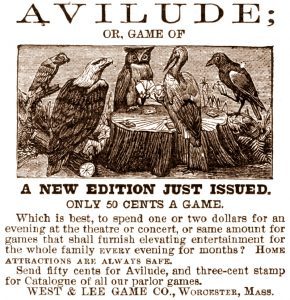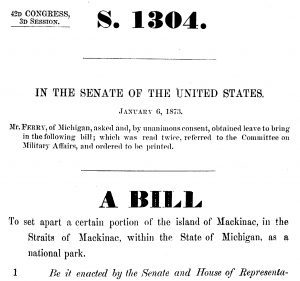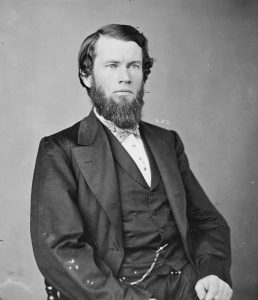Merry Christmas!
“What though the woods are bare and cheerless, the water-courses bound by fetters of ice, and the whole earth covered with snow? A cheery greeting, for all that, to those who burn the Yule log and brighten their homes with the holly and yew. They say these days are the embers of the dying year; then kindle the flames of life and love anew. Light up the candles that gleam in the branches of evergreen. Hang Christmas boxes on every bough. Make every one happy, old and young. Rejoice!”
Forest and Stream, December 25, 1873
The first Christmas edition of Forest and Stream brimmed with optimistic holiday cheer. Published in New York by Charles Hallock, the weekly journal gained quick popularity since its premiere that August. Its publisher was an unapologetic nature lover, prolific author, and well-traveled explorer of wild places. More than a rod and gun magazine, Forest and Stream was “devoted to field and aquatic sports, practical natural history, fish culture, the protection of game, preservation of forests, and the inculcation in men and women of a healthy interest in out-door recreation and study.”

Forest and Stream was filled with articles, news stories, editorials, humor, and reader submissions. Each issue also included advertisements for outdoor-related products. For Christmas 1873, one could dream of ice skates, sporting boats, clothing, hunting gear, fishing tackle, and Avilude, an educational card game featuring 64 different birds.
Charles Hallock was also a vocal and early promoter of America’s national parks. On March 1, 1872, President Ulysses S. Grant created the country’s first national park by signing the Yellowstone National Park Protection Act. The designation preserved more than 2 million acres of mountain landscapes for  future generations. On January 6, 1873, Michigan Senator Thomas W. Ferry proposed a second park for the nation’s people, located Mackinac Island.
future generations. On January 6, 1873, Michigan Senator Thomas W. Ferry proposed a second park for the nation’s people, located Mackinac Island.
A son of Presbyterian missionaries, Thomas Ferry was born at Mackinac Island’s Mission House in 1827. His bill proposed converting most of the U.S. military reservation on the island into a park, “for health, comfort, and pleasure, for the benefit and enjoyment of the people.” The park was intended to protect and preserve the island’s historic character and natural beauty. In part, Ferry’s bill directed the Secretary of War to provide “for the preservation from injury or spoilation of timer, mineral deposits, natural curiosities, or wonders within said park, and their retention in their natural condition.” It continued, “He shall provide against the wanton destruction of game or fish found within said park, and against their capture or destruction for any purposes of use or profit.”
Although Ferry’s initial proposal received widespread support, it moved slowly through Congress. After several hurdles, he introduced legislation to create Mackinac National Park on December 2, 1873. At

each step, growing press coverage across the country stimulated public support. On December 25, 1873, Forest and Stream included the following editorial by Mr. Hallock:
Mackinac Island as a Park.
“We most especially recommend to the notice of Congress … expediency of dedicating to the public use as a park the Island of Mackinac … celebrated for the magnificence of its scenery. Covered mostly with a grand old forest … it lies placidly on the deep blue waters of [Lake Huron]. It has certain peculiarities which would make the preservation of the Island for public use a most fitting one … the preservation of this Island would be hailed with untold satisfaction.
Measures of this character are as wise as they are thoughtful. The worthy Senator from Michigan is not thinking only of to-day, but of to-morrow, not of us alone belonging to the last quarter of the 19th century, but for those who will come a hundred years after us …
The Forest and Stream most strongly advocates the founding of National Parks and thinks the people cannot have too many of them.”
On March 3, 1875, more than two years after Senator Ferry’s initial bill, President Grant signed an act creating Mackinac National Park. The park existed for 20 years, until Fort Mackinac closed in 1895. When the U.S. Army left Mackinac Island, the national park was transferred to Michigan, and our first state park was created.
Today, 63 national parks can be found throughout the United States, plus several hundred national monuments, lakeshores, battlefields, seashores, historic parks, and more. Michigan is home to seven sites managed by the National Park Service, including Isle Royale National Park, in Lake Superior. The state also contains 103 Michigan State Parks and recreation areas, including the family of sites managed by the Mackinac Island State Park Commission. Learn more about Mackinac State Historic Parks at www.mackinacparks.com.
Thanks to Senator Ferry, Charles Hallock, and other park-lovers of the past, we can all enjoy gifts of wonder, inspiration, and education this holiday season and beyond. We hope to see you at Mackinac State Historic Parks in 2023. As Mr. Hallock once beseeched his readers, “Herewith we bespeak your favor. Though a stranger, we feel that you will bestow it, for is it not written, ‘One touch of Nature makes the whole world kin?’”










